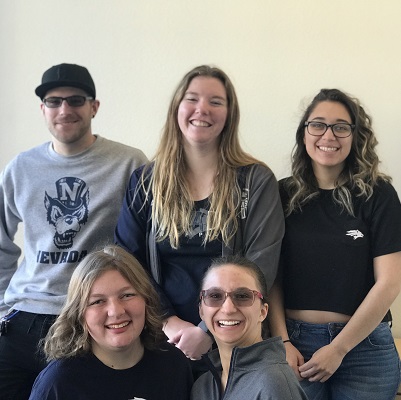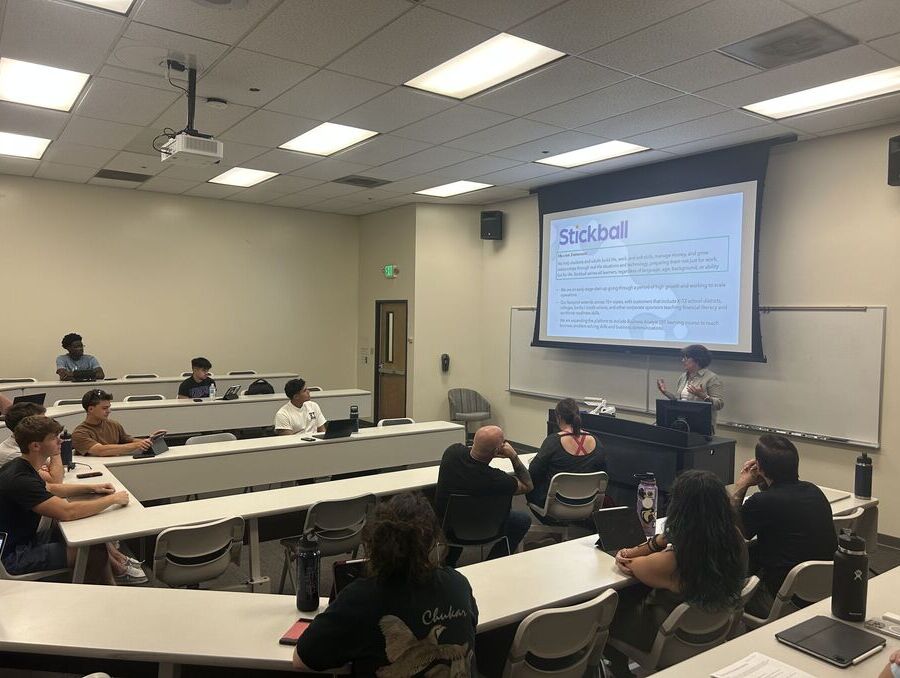Putting words into action: the neurodiversity conversation
Neurodiverse students are an important and significant portion of our campus community. Here's what that means and how to help.
In the Fall of 2019, the Disability Resource Center Peer Mentor Program decided to create a student-led group that would help students from all different backgrounds, majors and disability groups. The goal of the Student Working Group would be to provide a safe, accessible and equitable campus that enables all students to succeed in their education and everyday life. Earlier that spring, the DRC Peer Mentor Program mentors and mentees picked the color for tassels and cords for graduating students to recognize students with disabilities as an important asset to the University campus and those who support them. By a unanimous vote, ASUN passed a resolution in honor of the new tassel and cord solidifying the University’s commitment to accessibility. And thus, the Neurodiversity Student Working Group and the Neurodiversity Initiative were born.
According to the Cooperative Institutional Research Program survey administered in Fall 2019 to 3,007 incoming freshman, 24% reported having been diagnosed with at least one disability, 33% reported anxiety and 13% reported depression. This shows that a significant percentage of freshman students at the University self-identify as neurodiverse and almost one in four identify as having a diagnosed disability. In 2019, the Campus Climate Survey found that by disability status, respondents with multiple disabilities reported being significantly less comfortable than respondents with no disabilities. The Disability Resource Center here on campus serves 2,775 students, 13% of the total student population. There is a 10% increase per year of students seeking accommodations, and the DRC is performs new student intakes on a weekly basis. Knowing the prevalence of neurodiverse individuals on campus, it is important to understand what neurodiversity means.
So what is neurodiversity?
Neurodiversity takes the perspective that the range of differences in an individual’s cognitive and behavioral traits should be regarded as part of normal variation in the human population. In an educational setting, these traits may include (but are not limited to) individuals on campus with attention deficit and hyperactivity disorder (ADHD), autism, learning, physical and mental health issues. Having a class full of students with varying backgrounds and learning styles, it is therefore important to be aware of strategies to enhance all students’ ability to be more successful both inside and out of the classroom.
To help create a more inclusive classroom, Universal Design for Learning is one of the many tools or methods used to benefit all students. According to CAST, a nonprofit education research and development organization, UDL is “a framework for designing curricula that enables all individuals to gain knowledge, skills and enthusiasm for learning" and "provides rich support for learning and reduces barriers to the curriculum while maintaining high achievement standards for all.” Many students at the University understand the importance of an inclusive classroom; therefore, another goal of the Student Working Group is to bring awareness and create a more welcoming and effective learning environment.
Currently, there are five students actively participating in the group.
- Shannon Borba is a graduate student pursuing her degree in Higher Education Administration. Shannon describes herself as having an invisible disability. She was born with leukodystrophy, which causes dyscalculia, auditory processing disorder and anxiety. She recounted that, though most of her professors were willing to accommodate her, those who utilized UDL were especially helpful not only to her but to her classmates as well.
- Craig Histed is a recent University graduate with a bachelor’s degree in psychology. He has generalized anxiety, which has affected him throughout his education in numerous ways. He got involved with the student working group because he wanted students to know that they were not alone and can be a part of something bigger than themselves. He encourages students to reach their goals by prioritizing self-care and seeking out resources to help them be successful.
- Autumn Cuellar is a senior majoring in computer science and engineering with a minor in mathematics. She has cerebral palsy but refuses to allow this one piece of her identity define her as an individual, promoting the idea that disability is only present in the context of the surrounding environment. The Neurodiversity Initiative is really important to her because when she first started working in the robotics lab on campus, the doors to the lab had a number pad on them, which she could not use due to her mobility issues. Her advisor requested to get the locks changed to a card scanner, and after a few months, this simple change allowed Autumn to act as just another person in the lab who could go in and out as she pleased.
- Emily Fox is a current graduate special student pursuing a degree in cellular and molecular biology. Emily incurred a traumatic brain injury that resulted in lasting neurological effects. She is invested in the Neurodiversity Initiative because she wants to support other students who have felt excluded or unwelcome in any aspect of their lives.
- Azucena Alfaro is a senior majoring in public health science and working with CASAT. She has generalized anxiety and depression, which have impacted how she participates and learns in class. It can be difficult to attend class when there is a constant fear of judgement and feelings of sadness. This hinders Azucena’s learning because it can sometimes be hard to feel welcome on campus and take part in campus life. The Neurodiversity Initiative is important to Azucena as it is an opportunity to start a conversation about accessibility for students and faculty.
In the future, the Neurodiversity Student Working Group is looking forward to increasing their membership, so that more students’ voices can be heard. The goal is to give them a place where they can express themselves freely and talk about what they need to be successful at the University without scrutiny or stigma. The Student Working Group is also working to build a strong community between students and faculty through UDL and awareness. The group is currently working on a webpage that will soon be up on the DRC’s main website, and in the Summer of 2020, the students will also be helping with the University’s first Summer Bridge to FIT program. This is a two-day program for incoming students who identify as neurodiverse to get their feet underneath them by giving them the resources and support needed to establish a strong foundation in their first semester and beyond.
Many things have changed in the past year and a half. The newly formed Student Working Group is excited to recognize and include all students and faculty. With the level of support and community that has already been expressed on campus, we are proving that neurodiversity is the rule, not the exception.
If you would like to join us and support this initiative or ask any questions, you can contact us at neurodiveristyunr@gmail.com.














